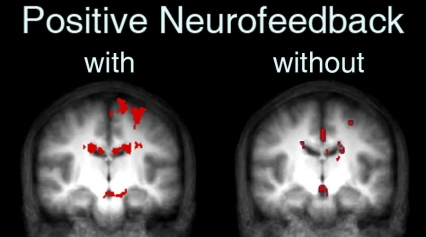The dopaminergic system is involved in the encoding and processing of reward and reward-dependent learning. The carefully balanced activity of these dopamine neurons is also one of the first functions to become impaired in addicted individuals. Thus, researchers and developers of new addiction treatments often try new and different ways of manipulating dopaminergic function in the relevant areas of the brain reward system. The goal of this study was to investigate whether young healthy individuals can use neurofeedback and mental imagery as a way to gain voluntary control over dopaminergic activity in the reward center, thereby potentially enhancing dopamine release to target brain regions. If reliable, such a non-invasive strategy could be of great clinical and scientific value. The neurofeedback paradigm required participants to maximize the height of a vertically moving ball on a screen after conjuring up novel rewarding stimuli, of which romantic or sexual imagery proved to be the most effective. The moving ball indicated the state of activation of the brain’s reward system, which was simultaneously being measured using magnetic resonance imaging. Participants’ ability to master this task strongly suggests that neurofeedback can be used to facilitate self-regulation of activity in key areas of the brain’s reward center. Future research could lead to novel and far-reaching applications, from the treatment of addiction to Parkinson's disease.
Article: (Sulzer et al., 2013)
Sulzer J, Sitaram R, Blefari ML, Kollias S, Birbaumer N, Stephan KE, Luft A, Gassert R (2013) Neurofeedback-mediated self-regulation of the dopaminergic midbrain. Neuroimage 75C:176-184. http://www.sciencedirect.com/science/article/pii/S1053811913006253

People can voluntarily regulate brain activity in key areas of the reward center by simply conjuring up pleasurable imagery. This ability can be further enhanced with the help of a positive neurofeedback training protocol designed to reinforce the brain activation.